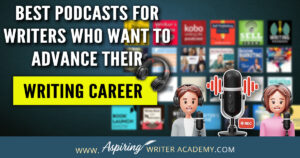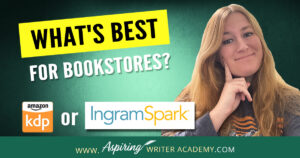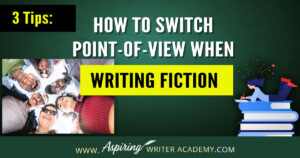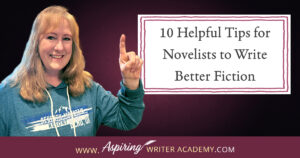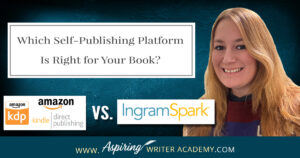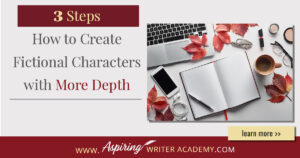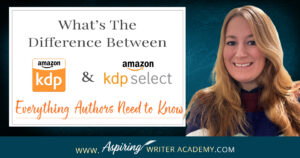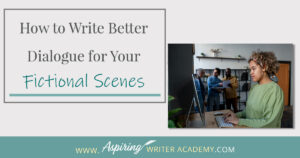100 Essential Writing and Publishing Terms All Authors Should Know
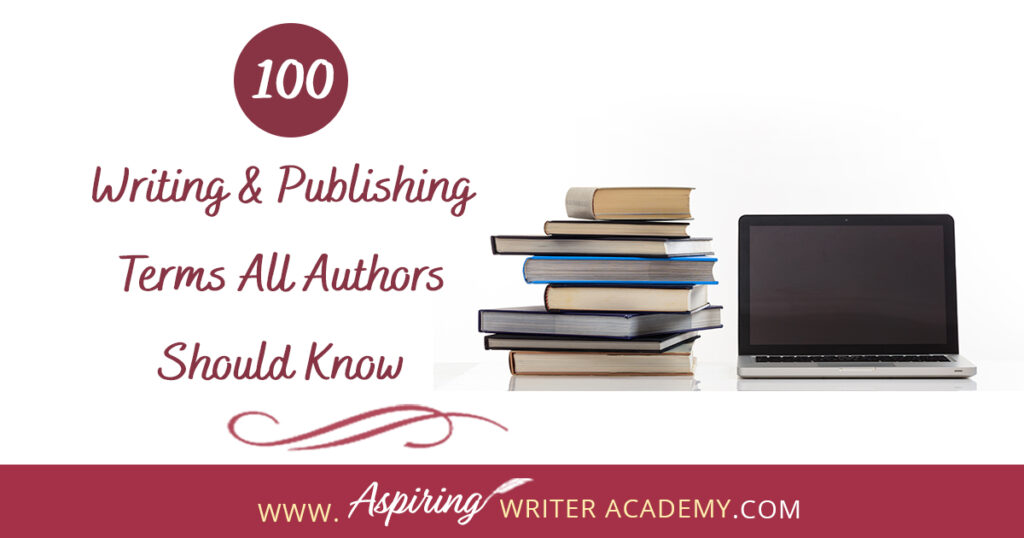
Entering the world of writing and publishing can feel overwhelming, especially with all the jargon and industry-specific terms thrown around. Whether you’re just starting your writing journey or looking to expand your knowledge, this comprehensive guide will help you understand the most important terms and abbreviations. Let’s dive into 100 essential terms that every author should know!
Common Abbreviations Every Author Should Know
WIP (Work in Progress):
The project an author is currently working on.
MS (Manuscript):
The draft of a book that is being written or edited.
POV (Point of View):
The perspective from which a story is told, such as first-person or third-person.
SFF (Science Fiction and Fantasy):
A genre that includes speculative fiction and often futuristic or fantastical elements.
YA (Young Adult):
Fiction targeted at readers aged 12-18, often dealing with coming-of-age themes.
MG (Middle Grade):
Books aimed at readers aged 8-12, focusing on characters in that age range.
NA (New Adult):
A genre focusing on characters in their late teens and early twenties, dealing with college, careers, and adult relationships.
KDP (Kindle Direct Publishing):
Amazon's self-publishing platform for both ebooks and print-on-demand paperbacks.
TR (Traditional Publishing):
A process where an author works with an established publisher to edit, print, and distribute their book.
POD (Print-On-Demand):
A method where books are printed only when ordered, reducing upfront costs.
R&R (Revise and Resubmit):
When an agent or editor is interested in a manuscript but requests revisions before offering representation or a deal.
TOC (Table of Contents):
A list of chapters or sections in a book, usually found at the beginning.
ARC (Advance Reader Copy):
A pre-publication version of a book distributed to reviewers to generate buzz before the official release.
BISAC (Book Industry Standards and Communications):
A system used to classify books by subject for cataloging and sales purposes.
AAR (Association of Authors’ Representatives):
A professional organization of literary agents in the U.S. that ensures agents adhere to a code of ethics.
ISBN (International Standard Book Number):
A unique identifier assigned to each edition of a book for sales and distribution.
LCCN (Library of Congress Control Number):
An identifier assigned by the Library of Congress for cataloging books in U.S. libraries.
TBR (To Be Read):
A list of books that a reader plans to read in the future.
CP (Critique Partner):
A fellow writer who provides feedback on your manuscript in exchange for you critiquing theirs.
HEA (Happily Ever After):
A common trope in romance novels where the story ends with a satisfying conclusion, often in marriage or commitment.
Key Publishing Terms Authors Need to Know
Advance:
A payment given to an author by the publisher before the book is published, usually against future royalties.
Royalties:
The percentage of sales an author earns from each copy of their book sold, usually after the advance is earned out.
Backlist:
A publisher's catalog of previously published books that are still in print and available for purchase.
Frontlist:
Books that are newly released or upcoming from a publisher.
Beta Reader:
A reader who provides feedback on a manuscript before it is finalized for publication.
Blurb:
A short description or endorsement for a book, typically used for promotional purposes.
Genre:
The category or classification of a book, such as romance, thriller, fantasy, or memoir.
High Concept:
A book idea that is easily summarized and has a strong, marketable premise.
Hook:
The unique element that grabs readers’ attention and makes the story compelling.
Query Letter:
A one-page letter sent to agents or editors to pitch a manuscript, usually including a synopsis and the author’s bio.
Three-Act Structure:
A narrative model that divides a story into three parts: setup, confrontation, and resolution.
Synopsis:
A brief summary of a book's plot, characters, and themes, often required when submitting to agents or publishers.
Elevator Pitch:
A short, concise description of a book that can be delivered in 30-60 seconds.
Developmental Edit:
An in-depth edit focusing on the structure, plot, and characters of a manuscript.
Line Edit:
An edit that focuses on improving sentence structure, word choice, and overall flow of the text.
Copyedit:
A type of editing that focuses on grammar, punctuation, spelling, and consistency in the manuscript.
Proofreading:
The final stage of editing, focusing on catching any remaining typos or formatting issues before the book is printed.
Galleys:
A pre-publication version of the book used for final proofreading and review.
Turnaround Time:
The amount of time it takes to complete a specific task, such as editing or printing.
Head-Hopping:
Shifting from one character’s perspective to another within a scene, often considered confusing for readers.
Book Proposal:
A document that includes an overview, sample chapters, and marketing plans for a book, either fiction or nonfiction.
Book Packager:
A company that develops book ideas and sells them to publishers, often hiring writers to create the content.
Advance Reader Copy (ARC):
A pre-publication copy sent to reviewers, booksellers, or influencers before the official release.
Author Platform:
An author’s presence and influence, including social media following, website, mailing list, and public appearances.
Pre-Sale:
The period during which readers can pre-order a book before its release.
Street Team:
A group of readers who help promote a book through social media, reviews, and word-of-mouth.
Pseudonym:
A fake name or pen name an author uses instead of their real name.
Series:
A group of books with related characters or settings, often published in a specific order.
ISBN (International Standard Book Number):
A unique 13-digit identifier used for cataloging and selling books.
Trade Paperback:
A larger, more durable version of a paperback, often printed after the hardcover release.
Advanced Publishing Jargon You Should Know
Subrights:
Short for subsidiary rights, these include foreign rights, audiobook rights, film/TV rights, and more.
World Rights:
A deal where the publisher has the right to sell the book globally, including translations.
Book Packager:
A company that develops book ideas and sells them to publishers, often hiring writers to create the content.
B-Format:
A smaller paperback size, often used for mass-market books.
Bookbinding:
The process of physically assembling a book, which includes sewing or gluing pages together and adding a cover.
Trim Size:
The dimensions of the printed book, such as 6” x 9” for trade paperbacks.
First Serial Rights:
The right to publish an excerpt or chapter of a book before it is officially released.
Exclusive Rights:
Rights granted to a publisher or agent to be the sole entity to publish or sell a work in a particular format or market.
Non-Exclusive Rights:
Rights granted that allow the author to publish or sell their work elsewhere.
Vanity Press:
A company that charges authors to publish their books but does not offer professional editing, marketing, or distribution.
Imprint:
A specific brand or division of a publishing house, often specializing in certain types of books or genres.
Marketing Plan:
A detailed strategy created by an author or publisher to promote and sell the book, including target audience and promotional activities.
Print Run:
The number of copies of a book printed in a single batch.
Ghostwriter:
A writer hired to write a book, speech, or other content that is officially credited to someone else.
Ebook:
A digital version of a book that can be read on e-readers, tablets, or computers.
Anthology:
A collection of short stories or essays, often by different authors, compiled into one volume.
Nonfiction:
A genre of writing based on real events, people, and facts.
Trade Publication:
A magazine or journal that covers the business and trends of a specific industry, often used for book announcements.
Editor-in-Chief:
The highest-ranking editor in a publishing company or magazine, responsible for final editorial decisions.
Option Clause:
A clause in a publishing contract that gives the publisher first rights to the author’s next work.
Royalty Statement:
A detailed report from the publisher showing how many books have sold and how much the author has earned.
Submission Guidelines:
Instructions provided by publishers or agents detailing how authors should submit their work for consideration.
Out-of-Print:
When a book is no longer being printed or distributed by the publisher.
Public Domain:
Creative work that is not protected by copyright and is free for anyone to use.
Midlist Author:
An author whose books sell modestly but consistently, without becoming bestsellers.
Acquisition Editor:
The editor responsible for finding and acquiring new books for publication.
Blitz Campaign:
A concentrated marketing effort designed to generate as much publicity as possible in a short amount of time.
Literary Agent:
A representative who helps authors find publishers and negotiates book contracts.
Endorsement:
A positive review or statement from a well-known person or author that is used in a book’s marketing.
Cover Letter:
A brief introduction to the author and the work they are submitting to editors or agents.
Beta Reader:
A reader who provides feedback on an early draft of a manuscript.
Blitz Campaign:
A concentrated marketing effort to generate maximum publicity in a short time.
Proof:
A preliminary version of a printed book, used for reviewing before final printing.
Copyright:
Legal protection that gives an author exclusive rights to their work.
Print Run:
The number of copies printed in a single batch.
Unsolicited Manuscript:
A manuscript sent to an agent or publisher without being requested.
Option Clause:
A clause in a publishing contract giving the publisher first rights to the author’s next book.
Backlist;
The catalog of previously published books that are still in print.
Frontlist:
Newly released or upcoming books from a publisher.
Query Tracker :
A system used by authors to keep track of submissions to agents or publishers.
Bookbinding :
The process of assembling the pages of a book into a bound volume.
Trim Size :
The dimensions of a finished book.
Galley Proof :
An unformatted version of a book used for proofreading.
Trade Publication :
A magazine or journal for professionals in a specific industry, often used in the publishing world.
Short Story Collection :
A book made up of a series of short stories, often by the same author.
Reversion of Rights:
When rights to a book revert back to the author from the publisher, usually after going out of print.
Sales Rank:
The position of a book in sales charts, typically on platforms like Amazon.
Cross Promotion :
A marketing strategy where authors promote each other’s books.
Blurb:
A short, enticing description used to sell a book, often found on the back cover or online listings.
We hope this guide helps you confidently navigate the complex world of writing and publishing. Whether you're submitting your first manuscript, negotiating contracts, or exploring marketing strategies, understanding these key terms will make the process smoother. Keep this resource close as you continue your writing journey, and remember—publishing is a learning experience, and the more you know, the better equipped you'll be for success. Happy writing!
Do you find it difficult to create compelling antagonists and villains for your stories? Do your villains feel cartoonish and unbelievable? Do they lack motivation or a specific game plan? Discover the secrets to crafting villains that will stick with your readers long after they finish your story, with our How to Create Antagonists & Villains Workbook.
This 32-page instructional workbook is packed with valuable fill-in-the-blank templates and practical advice to help you create memorable and effective antagonists and villains. Whether you're a seasoned writer or just starting out, this workbook will take your writing to the next level.
We Believe All Authors Can Aspire to Take Their Writing to the Next Level!
Our Goal for Aspiring Writer Academy is to help people learn how to write quality fiction, teach them to publish and promote their work, and to give them the necessary tools to pursue a writing career.

ENTER YOUR EMAIL BELOW
TO GET YOUR FREE
"Brainstorming Your Story Idea Worksheet"
7 easy fill-in-the-blank pages,
+ 2 bonus pages filled with additional story examples.
A valuable tool to develop story plots again and again.
Other Blog Posts You May Like
Amazon KDP for Beginners: A Step-by-Step Guide to Self-Publishing
Biggest Self-Publishing Mistakes New Authors Make
The Ultimate Guide to Using ChatGPT for Book Title Inspiration
What Authors Need to Know About ISBN Numbers Before Self-Publishing
Pros & Cons of Traditional vs. Self-Publishing Fiction
An Author Website is Your Ultimate Marketing Tool: Here’s Why
How To Plan an Amazing Children’s Book Launch Party
What to Include in Your Author Newsletter
Why Authors Need an Email Newsletter
How to Easily Make a YouTube Banner in Canva for Free
How to Make a YouTube Banner (Adobe Photoshop Channel Art Tutorial with Free Template)
How to Create Bookmarks for GotPrint in Adobe Photoshop
How to Upload and Order Bookmarks on GotPrint
Author Chats: Kate Breslin & Book Launch Promotion
How To Create a YouTube Channel To Promote Your Writing
23 of the Best Free Stock Photo Sites Every Writer Should Be Using
The Ultimate Book Signing Checklist: What to Bring to Your First Book Signing
Fiction Writing: How to Write a Back Cover Blurb that Sells
What is an Author Platform and Why Do Writers Need One?
How To Create A Google Account For Your Author Platform
How to Create and Set-Up a Professional Author Page On Facebook
Samantha Panzera is an adventurous travel blogger, graphic designer, and multi-media business entrepreneur who uses the experience she’s gained over the years to teach aspiring writers the skills they need to build an author platform and take their careers to the next level.
